Wooster, OH – Students in Dr. Pollock’s Earth Materials course showcased their creative talents for their final project. Inspired by AGI’s Earth Science Week photography contest, students were tasked to “capture an image of the ways Earth materials are part of life where you live.” Enjoy these gorgeous images created by our students.
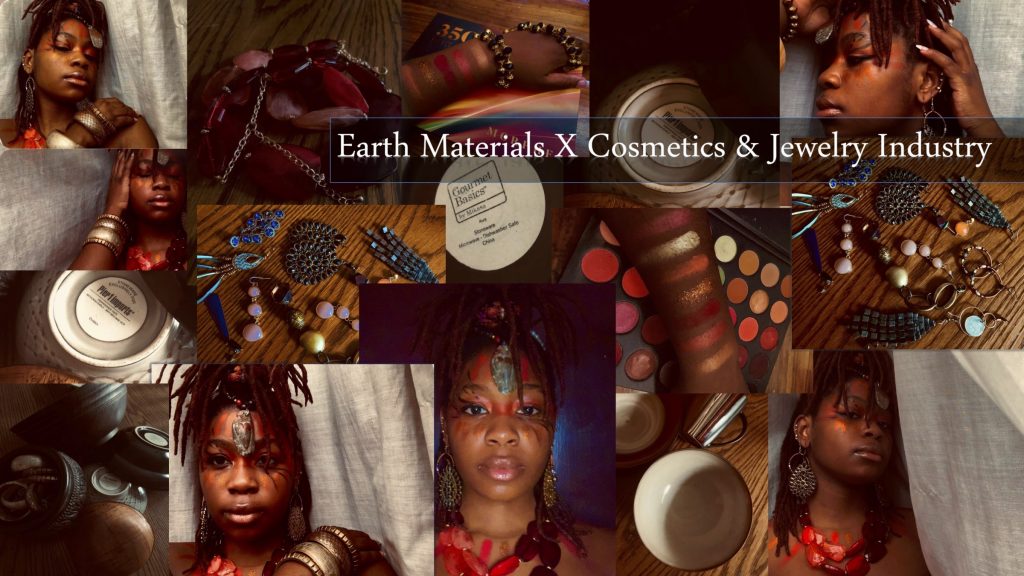
Mazvita Chikomo’s (’22) image shows different uses of eyeshadow, jewelry, and stoneware in cosmetics.
Mazvita writes:
I chose to make a picture entry based on the relations between people and earth materials in the cosmetic and jewelry industry.
Dating back from 5000B.C. Earth Materials have been an integral part of society in the cosmetics industry in the form of eyeliner from coal and water, as seen on Cleopatra in Ancient Egypt, and in eyeshadow pigments that were made from using different forms of oxidized clay. We may not be using the same raw materials to make the eyeliners, and eyeshadows we use today but we still take inspiration from ancient make-up. Not only do we use earth materials in the make up industry, but the jewelry industry makes synthetic crystals that are influenced and inspired by naturally occurring minerals that may be found in the ground.
This piece highlights this adaptation showing different uses of eyeshadow, jewelry and stoneware that can be used to hold the jewelry and cosmetic products.
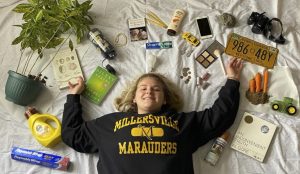
Caitlyn Denes’ (23) image shows how Earth Materials are used in everyday life.
Caitlyn writes:
After spending an entire semester in Earth Materials, I discovered that life as we know it exists entirely upon our dependence on a wide array of earth materials. Without air, soils, water, and rocks and minerals, virtually nothing around us would exist. The inspiration behind this photo submission was an all-about me project that my mother’s second-grade students participated in. The assignment was simple, lie on your back and place items around you that tell the story of who you are: your goals, interests, favorite items, etc. I took this into consideration and decided to use a similar concept in creating my photo. I simply placed items around me that are comprised of earth materials. All of the items are meaningful to not just me, but every person on earth because they are utilized in everyday life.
To understand the work, simply view each item placed around me. It can be as simple as a home-grown carrot or as complex as the many metals found in pieces of technology like cellphones or cameras. Similarly, I included coins, which aren’t too special, but also a plant, as it fuels any number of chemical processes that gives life to each and every one of us. To illustrate the point that these items surround us in every aspect of life, I placed them all around me. I also made sure to hold some of the items, as furthers the point that we use them, not merely observe the many uses of earth materials.
From this image, I hope to get across a very important point: respecting and conserving necessary earth materials. For this reason, I included two books that strongly emphasize climate change and protecting the environment. In order to secure the items in the photo for future generations, we need to be aware of where earth materials come from, how they are discovered, and how to utilize them to their fullest potential. Also, I hope this picture serves to inform people of what truly makes up the items we use each day. I think that few people realize the number of earth processes that must occur in order to form the main components of a light bulb, laundry detergent, soils, and so much more.






 The slump from above. Note the arcuate scarp that marks the upper reaches of the slump block – a series of grabens and scarps stair-step their way into the valley.
The slump from above. Note the arcuate scarp that marks the upper reaches of the slump block – a series of grabens and scarps stair-step their way into the valley.










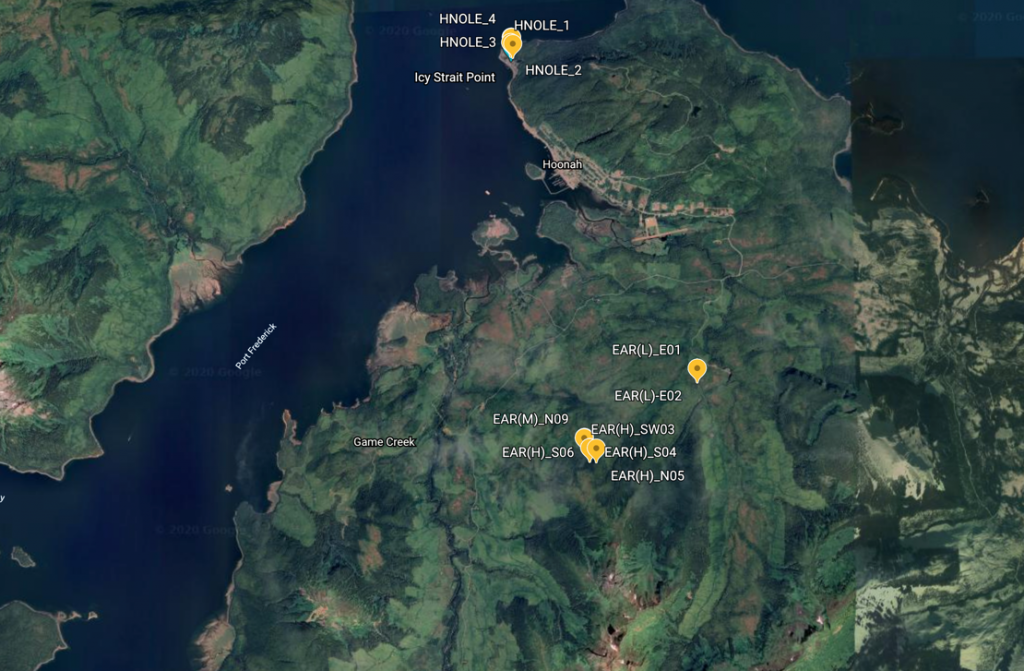
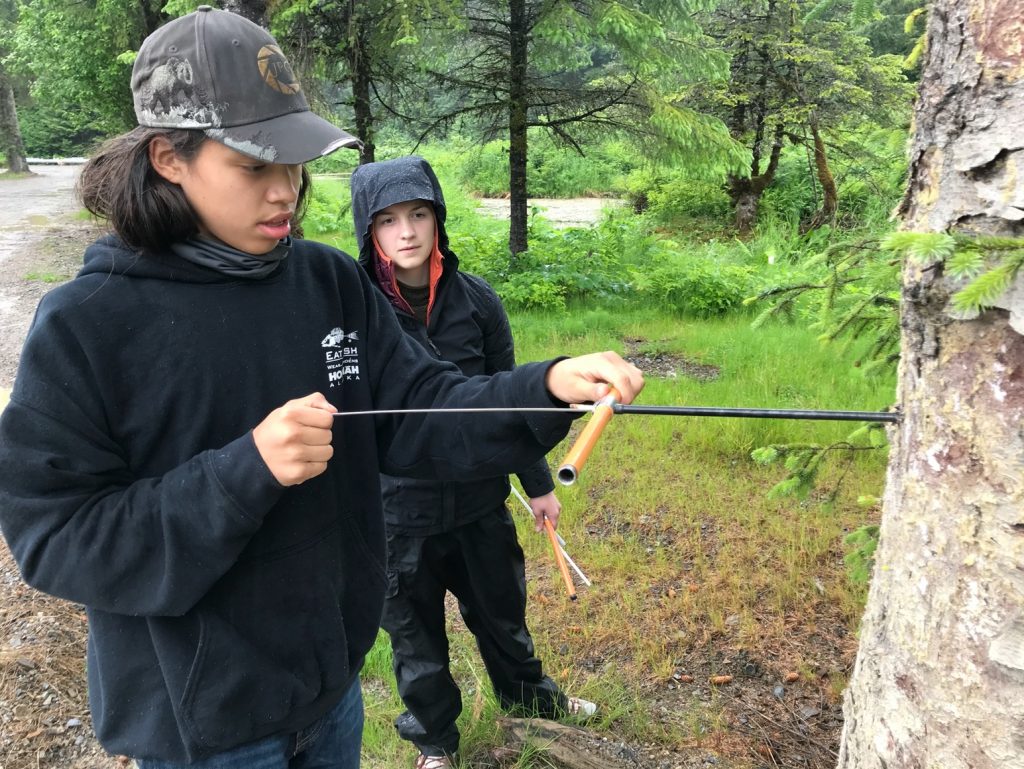 The group shown coring a Sika spruce just outside of town.
The group shown coring a Sika spruce just outside of town.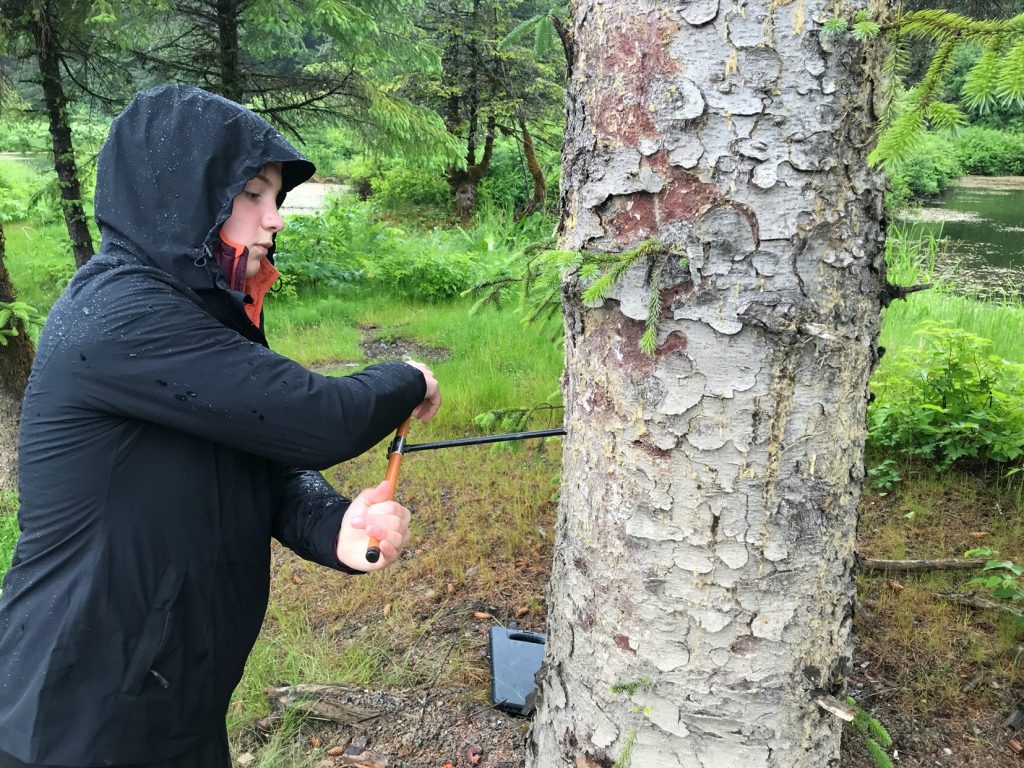 More coring – this time in the rain.
More coring – this time in the rain.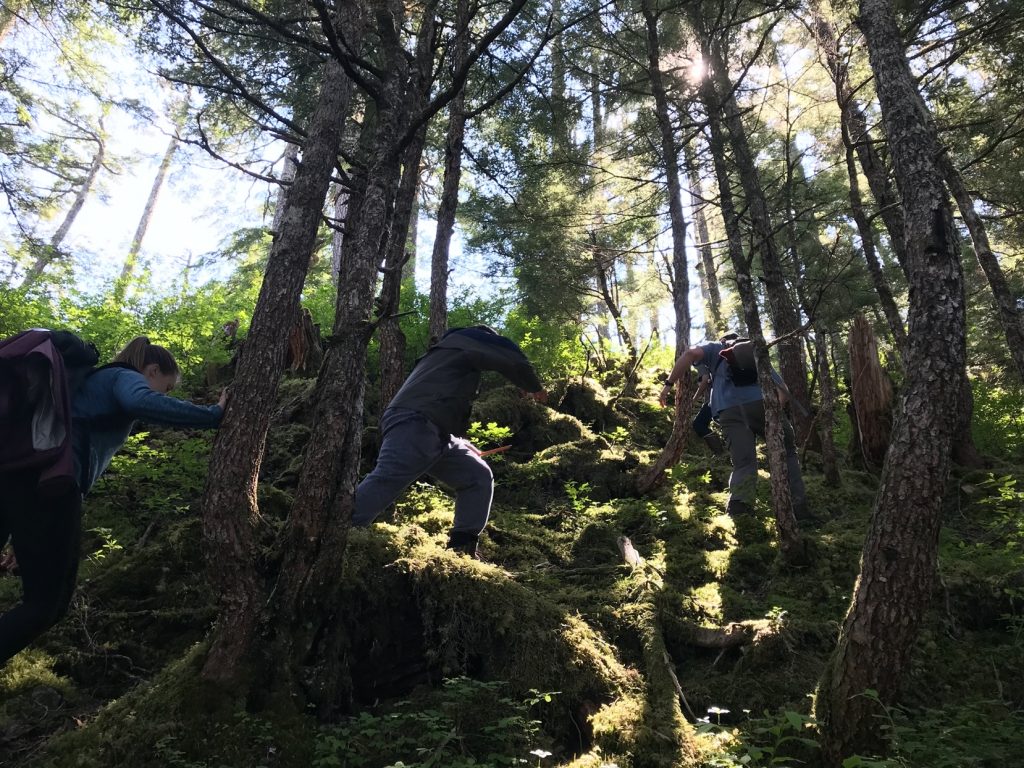 The steep climb up the flank of Ear Mountain to find the old Mountain Hemlocks.
The steep climb up the flank of Ear Mountain to find the old Mountain Hemlocks. Comparisons of the fast growing Sitka Spruce and the slow growth of the higher elevation Mountain Hemlock.
Comparisons of the fast growing Sitka Spruce and the slow growth of the higher elevation Mountain Hemlock. The cores from the hemlock some over 400 years old show lots of stress , clinging to the mountain side and battered by storms. They are also showing a possible drop in ring-width over time
The cores from the hemlock some over 400 years old show lots of stress , clinging to the mountain side and battered by storms. They are also showing a possible drop in ring-width over time 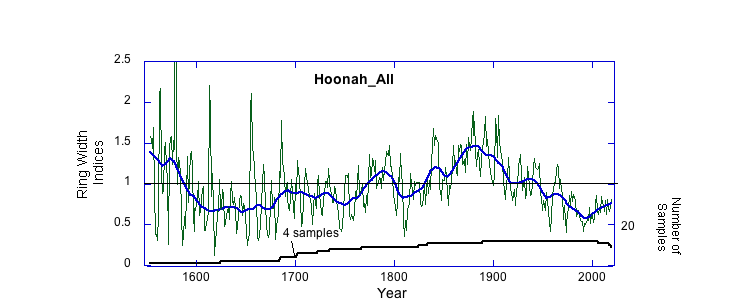 So we measured the ring-widths (Nick Wiesenberg and Melita Wiles did) and then we compiled the ring-width data into a chronology above. This chronology is the full record going back into the 16th century
So we measured the ring-widths (Nick Wiesenberg and Melita Wiles did) and then we compiled the ring-width data into a chronology above. This chronology is the full record going back into the 16th century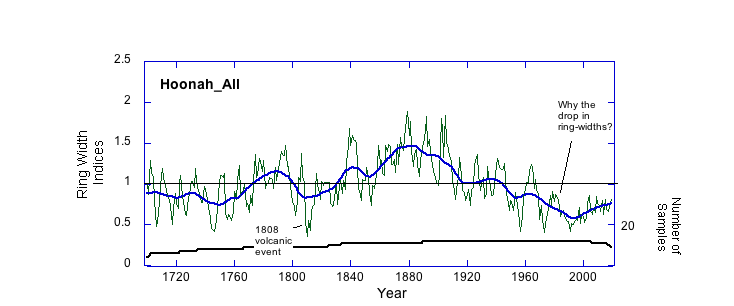 This chronology is truncated at 1720 or so when we had at least 4 samples. The most narrow rings follow the 1808 unknown eruption that cooled much of the region – it is unknown as no one knows where the volcano that erupted is located – it is recognized in ice cores. The other intriguing feature is the relatively recent (last 50 year) drop in ring widths. It may be due to increased evapotranspiration demands with increasing summer minimum temperatures. There is a correlation of -0.39 (p<0.04) between tree growth and average April-August minimum temperatures. Other studies have shown that warming night time temperatures lead to increased respiration at night and along with possible greater ET demand or increased cloudiness during the day there may be a decrease in photosynthesis leading to decreased carbon uptake (Sullivan et al., 2015). Interestingly, tthe work of Mazvita Chikomo done this summer as part of the AMRE project, discovered some pretty strong negative correlations between Mt. Hemlock growth and minimum monthly temperature records in Prince William Sound – perhaps there is a link? This is a promising line of research to further investigate the health of Mt. Hemlock in the region and it is something we plan to pursue with more samples in the future.
This chronology is truncated at 1720 or so when we had at least 4 samples. The most narrow rings follow the 1808 unknown eruption that cooled much of the region – it is unknown as no one knows where the volcano that erupted is located – it is recognized in ice cores. The other intriguing feature is the relatively recent (last 50 year) drop in ring widths. It may be due to increased evapotranspiration demands with increasing summer minimum temperatures. There is a correlation of -0.39 (p<0.04) between tree growth and average April-August minimum temperatures. Other studies have shown that warming night time temperatures lead to increased respiration at night and along with possible greater ET demand or increased cloudiness during the day there may be a decrease in photosynthesis leading to decreased carbon uptake (Sullivan et al., 2015). Interestingly, tthe work of Mazvita Chikomo done this summer as part of the AMRE project, discovered some pretty strong negative correlations between Mt. Hemlock growth and minimum monthly temperature records in Prince William Sound – perhaps there is a link? This is a promising line of research to further investigate the health of Mt. Hemlock in the region and it is something we plan to pursue with more samples in the future. 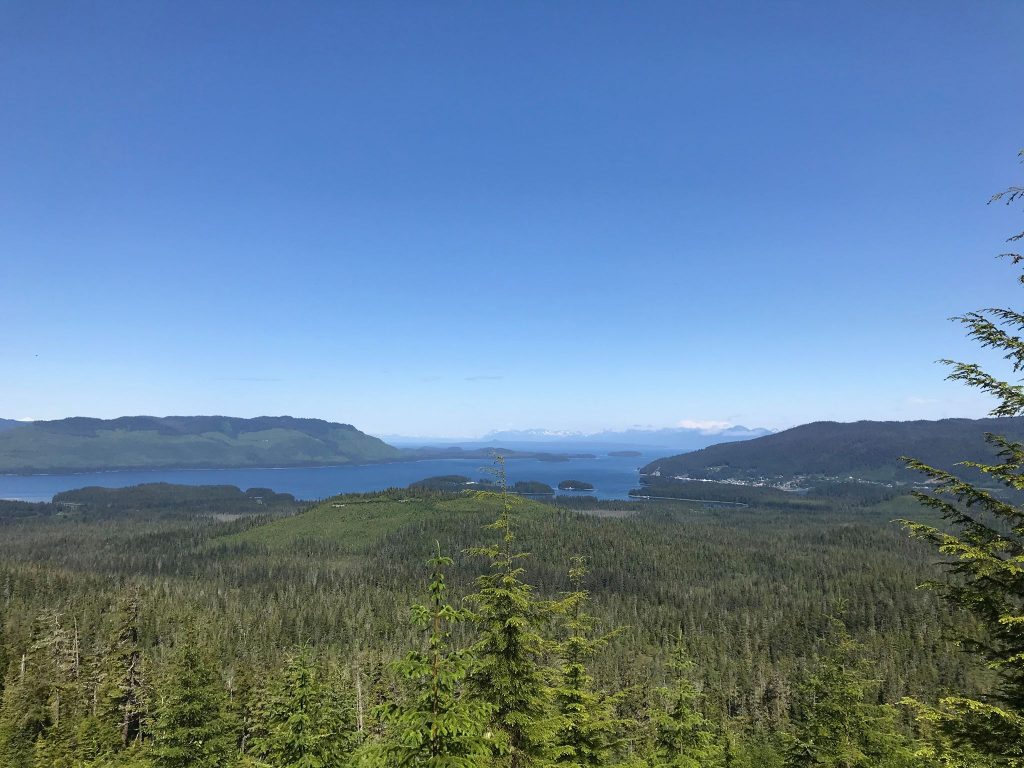



 The team coring a White Oak.
The team coring a White Oak.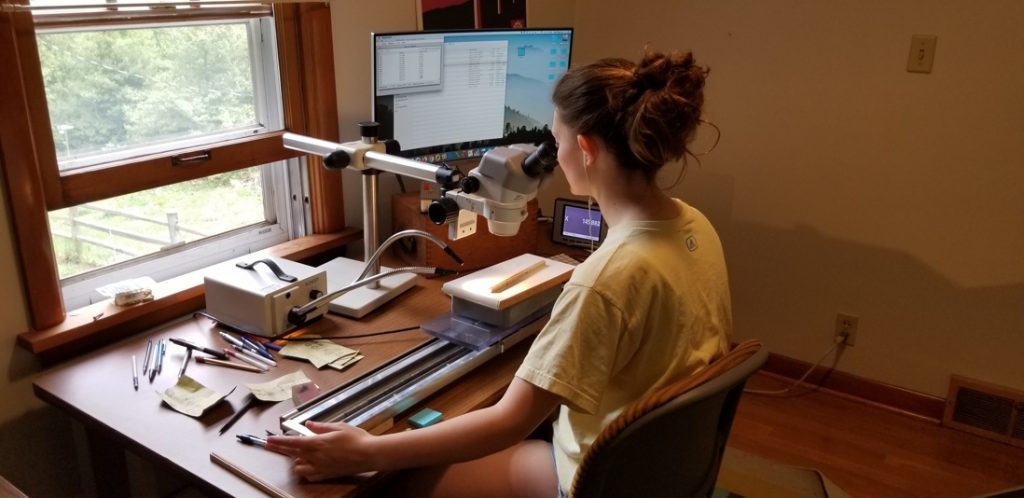 Measuring tree cores from Kinney Field in the Lab.
Measuring tree cores from Kinney Field in the Lab.




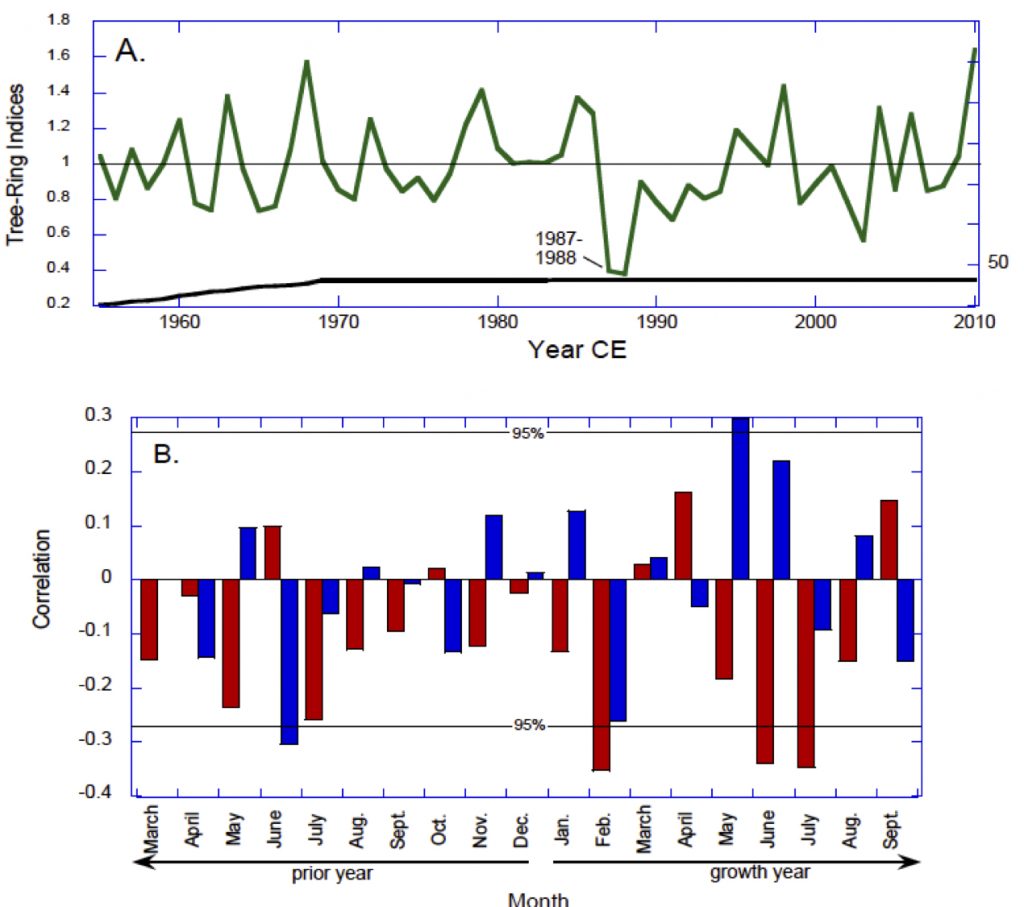
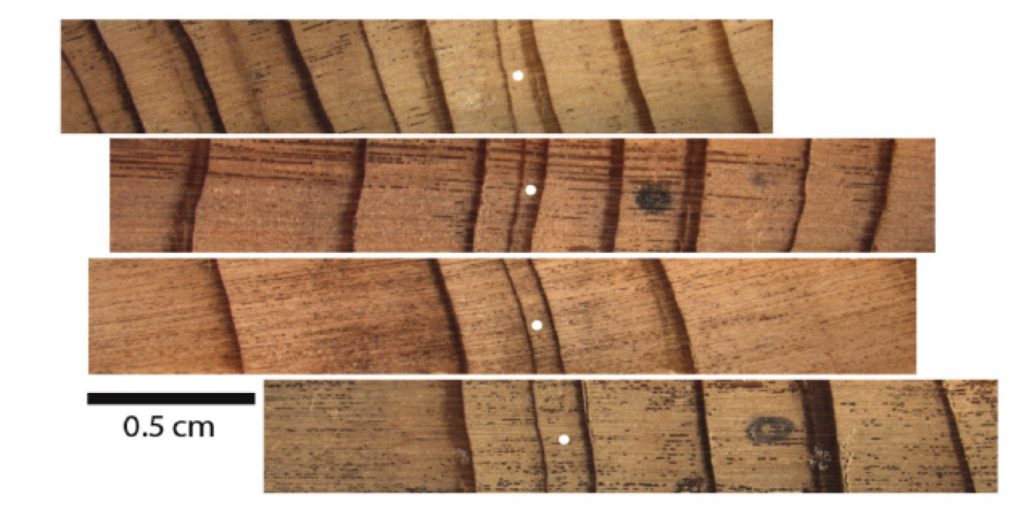
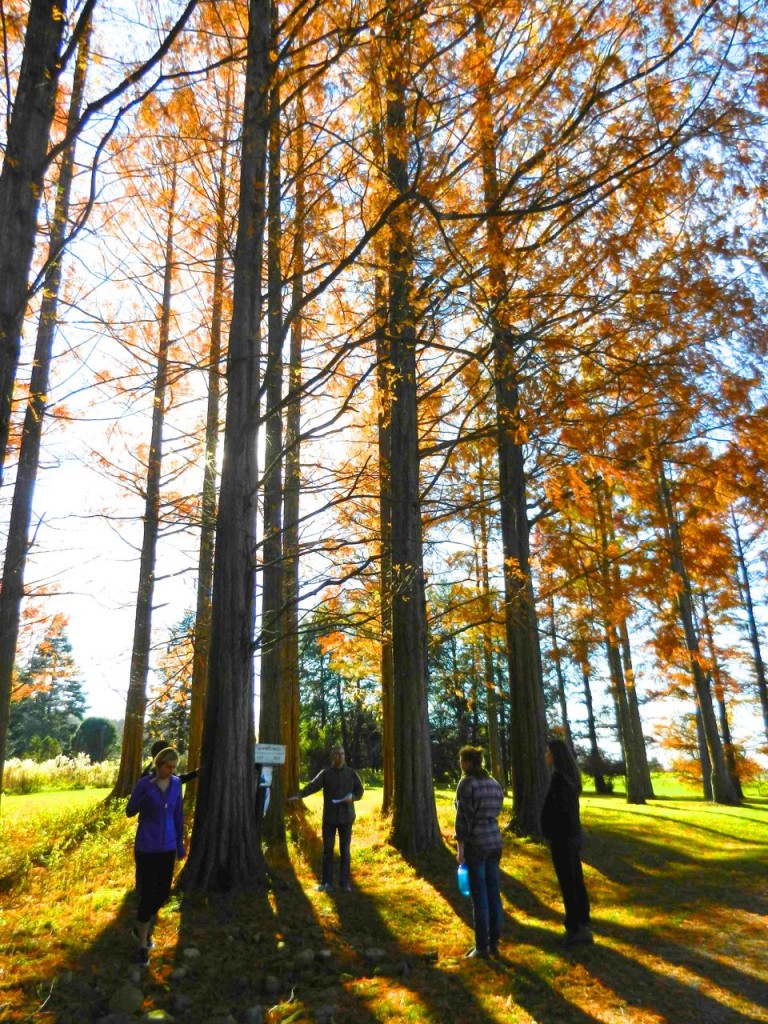 The College of Wooster Paleoclimate class mulls around the Dawn Redwood stand.
The College of Wooster Paleoclimate class mulls around the Dawn Redwood stand. 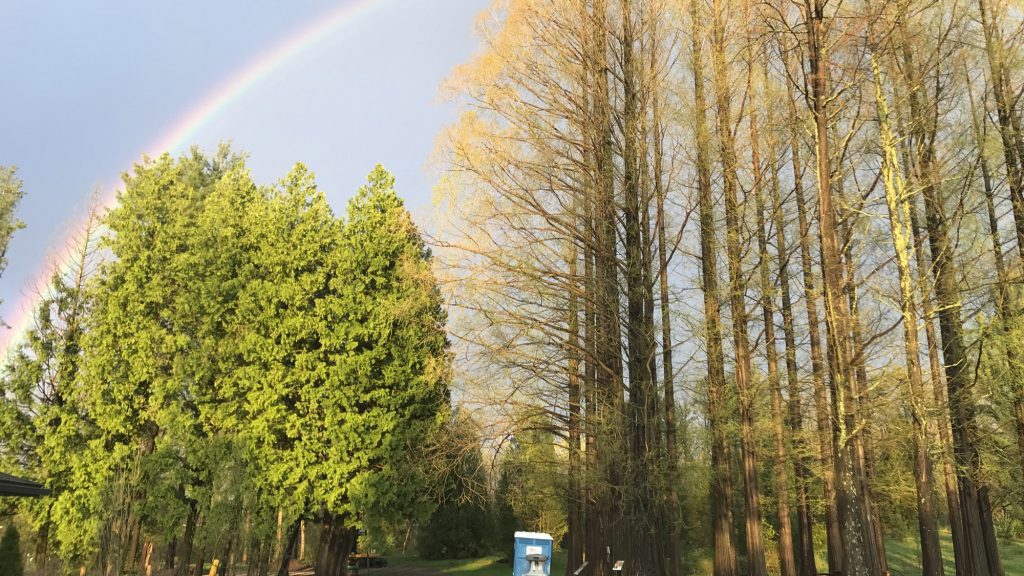 Another great photo of Dawn Redwoods – they are deciduous conifers so this photo in the early spring before growth.
Another great photo of Dawn Redwoods – they are deciduous conifers so this photo in the early spring before growth.